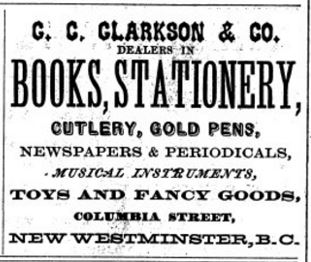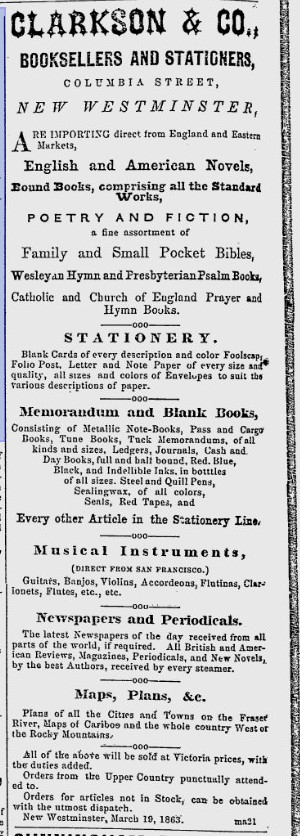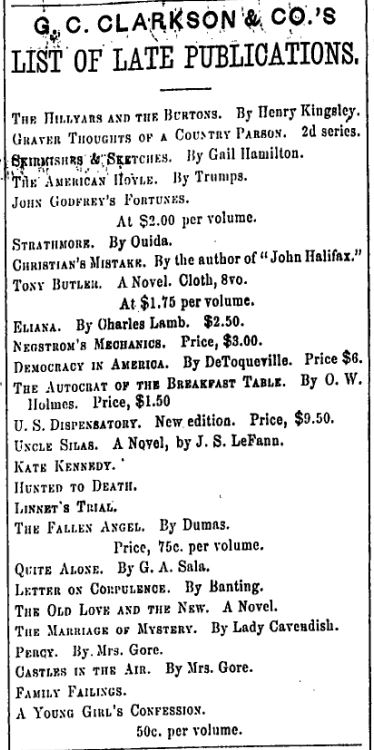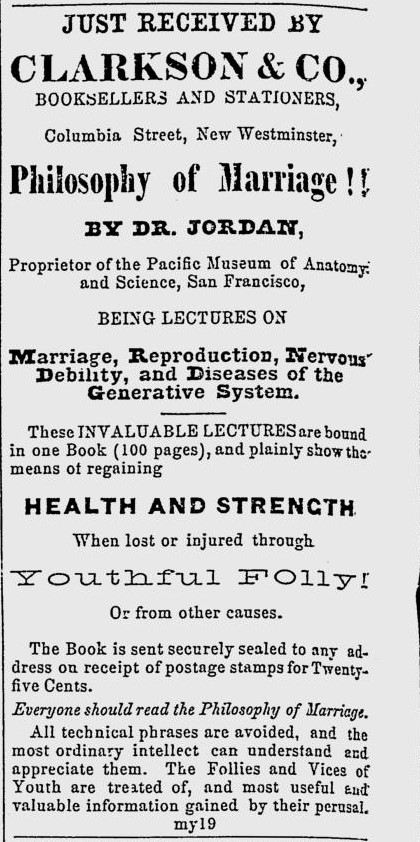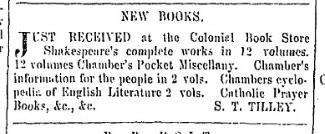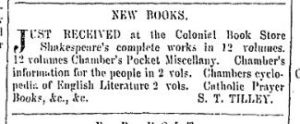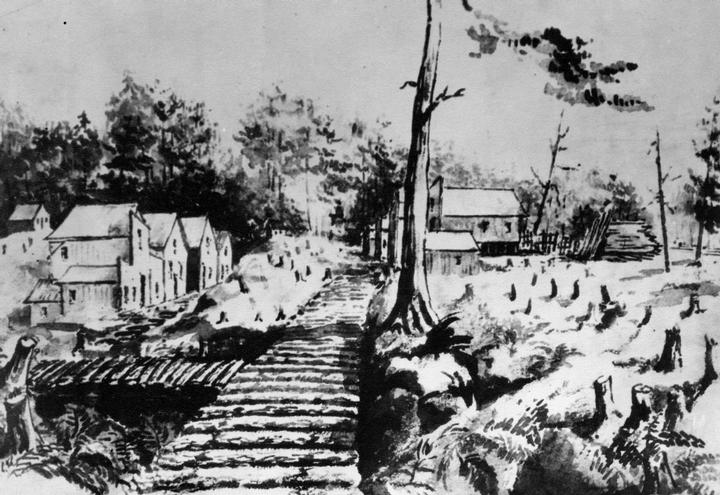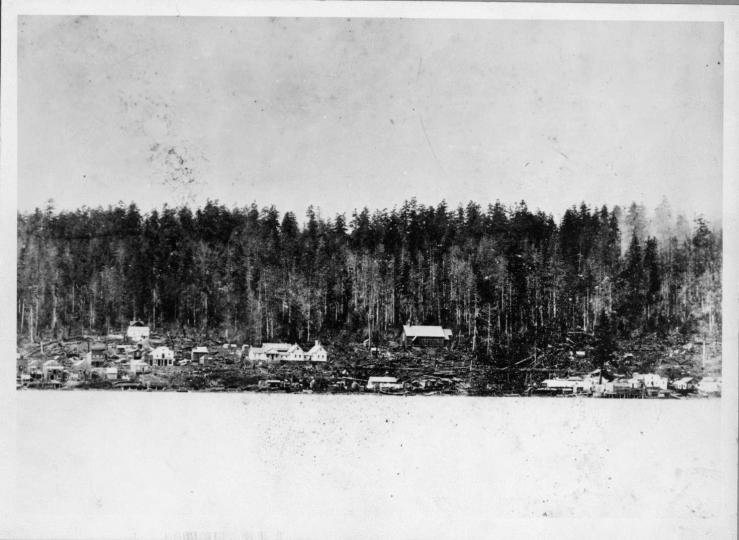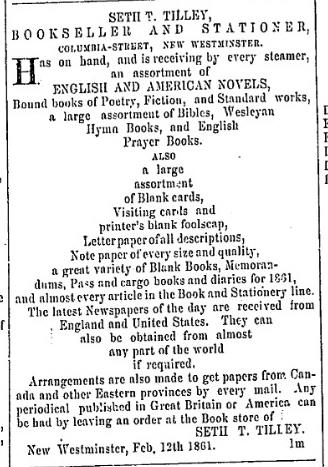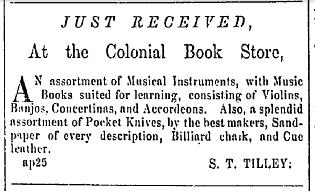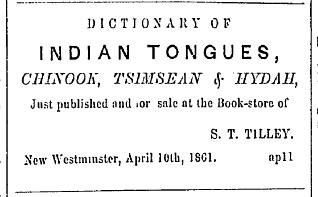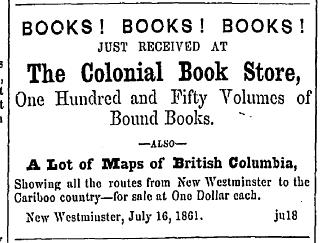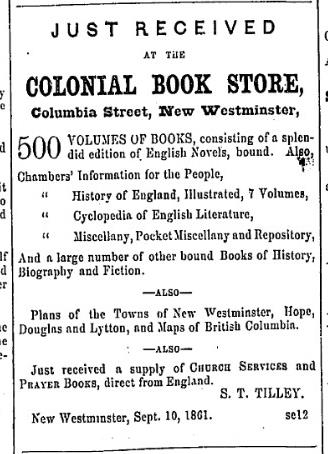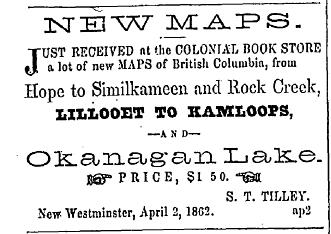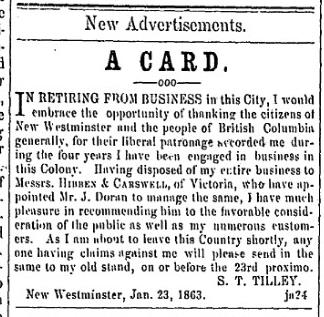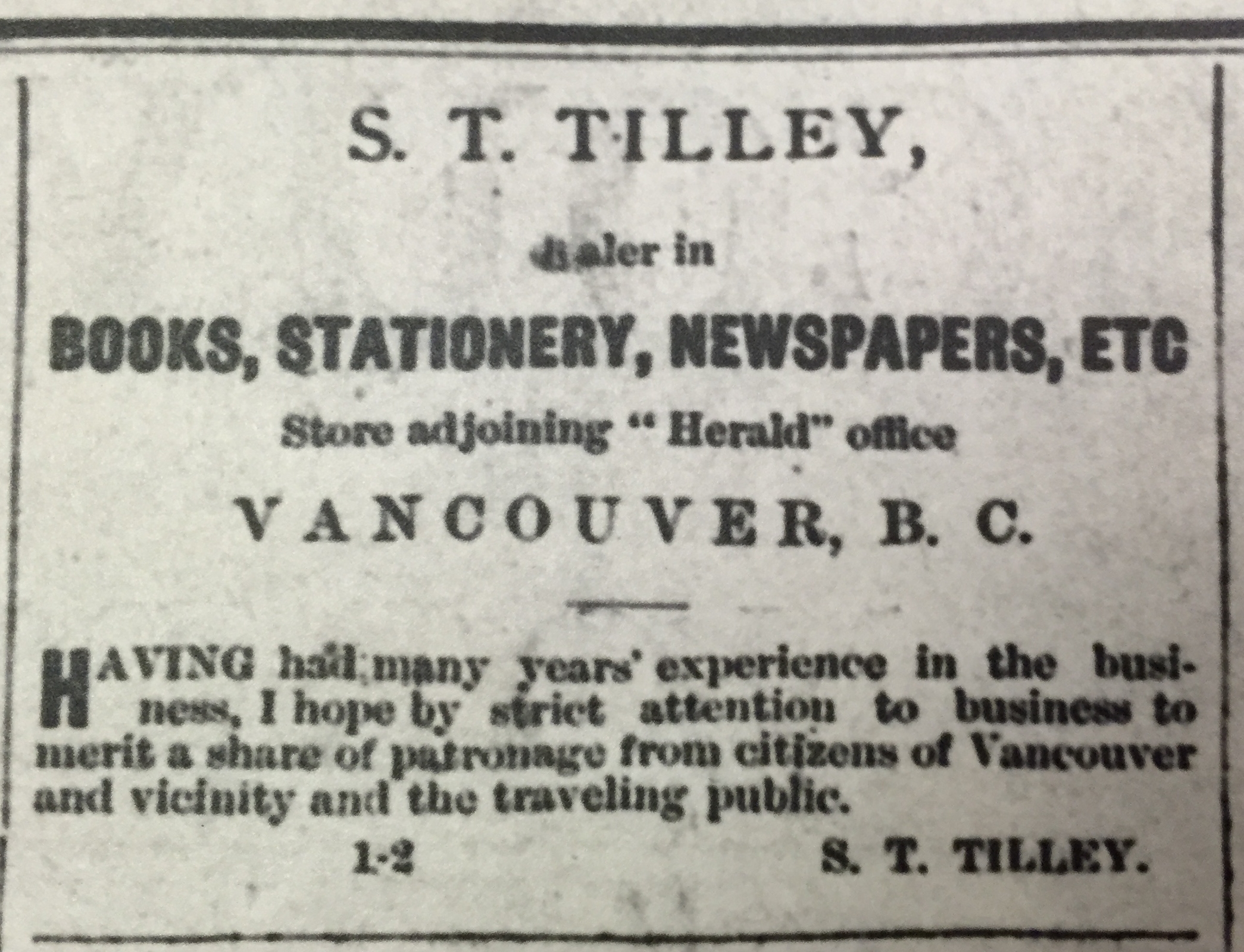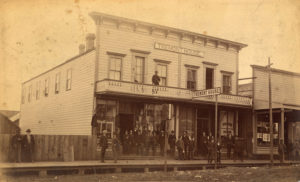After Seth Tilley sold his Colonial Bookstore in New Westminster to Victoria’s Hibben & Carswell in 1863, they took on a local partner named George Cubitt Clarkson, who operated the store as Clarkson & Co.
Born in Ontario
Born in 1843 in Ontario (or Upper Canada, as it was then called), George was the eldest child and only living son of William and Jane Clarkson. William was quite a well-known pioneer in New Westminster, arriving in 1858, with his family following shortly thereafter.
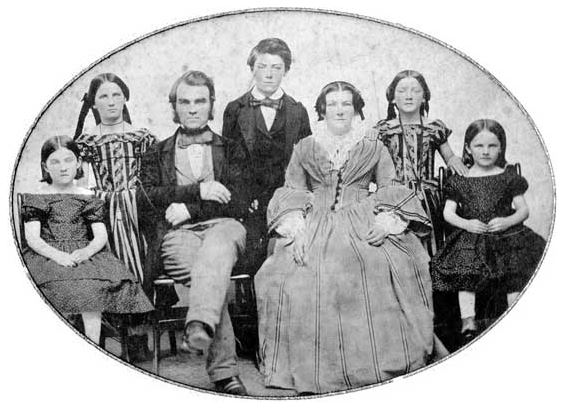
William became the first president of New West’s municipal council in 1864 (he is sometimes called the city’s first mayor), and he remained politically involved throughout his life. He also ran the New Westminster House (a boarding house), acted as a real estate agent, owned an apple tree nursery, and amassed significant land holdings. Clarkson Street in New Westminster is named for the family.
A Five-Year Bookselling Career
George was twenty when he became a bookseller, and he reportedly did very well. He carried on the Columbia Street store much as Tilley had, advertising a large range of books, stationery, newspapers and periodicals, maps, musical instruments, toys and games, and other goods.
In March 1868, George added a circulating library to his store, and on June 10 that same year, the British Columbian applauded him for the “business energy and push” that had increased the circulation “of useful periodical literature throughout the mainland to double what it has been heretofore.”
The partnership between George Clarkson and T.N. Hibben & Co. was dissolved on June 20, 1868. At first George carried on Clarkson & Co. on his own, but by October, he had a new partner in his brother-in-law, John Stillwell Clute, who had married George’s sister Sarah in 1866.
Clute & Clarkson sold much more than books and stationery, operating more as a general store. Charles Major (another of George’s brothers-in-law, married to Mary Clarkson in 1867) joined the partnership too.
Called to the Church
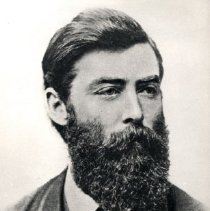
In 1870, George left business life when “the bent of his mind led him to adopt the church as his mission,” as his later obituary put it. He went to Ontario to attend Victoria College, where he prepared to enter the ministry. He also married during this time.
When George and his new wife returned to British Columbia, he served as a Wesleyan Methodist missionary in Chilliwack and Sumas. Now known as Reverend Clarkson, he remained in Chilliwack for two years.
The End of a Short Life
Voting records for 1874 and 1875 list George as a “trader,” so presumably he left the ministry and returned to New Westminster. In 1877, he was appointed as a customs collector in Burrard Inlet. He would not hold the position for long.
On May 15, 1877, George died of paralysis (likely meaning a stroke) at the age of thirty-three. “His upright and kindly disposition had implanted…great respect and regard in a large circle of acquaintance, by whom his loss will be surely regretted,” his obituary in the British Columbian read. “For his bereaved family and young widow, we know that the strongest sympathy is everywhere felt. Mr. Clarkson leaves no children.”
***
